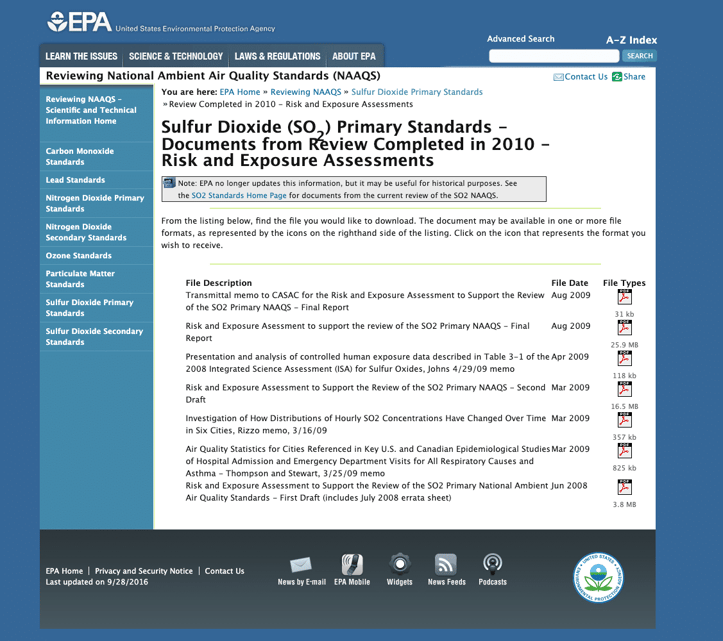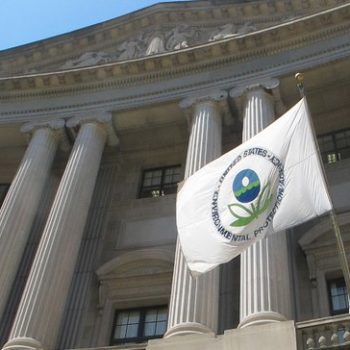The EPA has welcomed a new era of environmental compliance, one that shifts away from previous eras of heavy enforcement to compliance assurance. Instead of creating task forces and inspection goals, they are taking strides to increase public transparency to ensure they are tackling the biggest environmental problems.
While this may sound like a relief to heavy industry, it paves the way for more sophisticated and longer lasting enforcement as the general public is given even more access to your environmental data.
The EPA’s 2018-2022 Strategic Plan provides critical insights into how the public will play a larger role in environmental enforcement. This blog will recap the two most important takeaways from the Strategic Plan and unveil how public participation is leading to increased risks for companies in 2020 and beyond.
Community Engagement and eReporting
In their Strategic Plan, the EPA vows to drive compliance by inviting more community engagement to ensure they are working to solve the most pressing environmental issues. Community engagement drives the EPA’s mission to, “ ensure that the public can meaningfully participate in all of EPA’s work ”.
Increased community engagement impacts heavy industry and manufacturing by empowering the public to engage and participate in enforcement and violation detection like never before.
Air Compliance Case Study
The ongoing initiative to reduce air pollution from stationary sources really illustrates the power of public influence on environmental enforcement. After a flurry of information revealed that sulfur dioxides and nitrogen oxides are harmful to human health, the public urged the EPA to take steps to improve air quality . The EPA responded by naming air pollution from cement manufacturers a national enforcement priority as they are the third highest emitter of sulfur and nitrogen oxides in the United States.

Following the establishment of the national compliance priority, a huge settlement was reached with a cement manufacturing company requiring them to invest “ approximately $12 million in pollution control technology ”, after failing to reduce air emissions.
The public directly impacted the EPA initiative that led to the inspection and prosecution of the included facilities and many others. Following the public outcry, the initiative led to 11 other large settlement agreements with cement manufacturers. Those settlements have cost the companies almost $100 million dollars in civil penalties and treatment technologies .
Key takeaway: Increased community engagement outlined in the new Strategic Plan will continue to arm the public with knowledge, allowing them to participate in enforcement priorities like never before as seen in the building materials industry.
eReporting
In addition to increased community engagement, the EPA aims to improve the speed at which information is submitted, reviewed, and ultimately shared in online databases to ensure consistency and the rule of law is applied to violators, “ increased transparency and real time information [will] help us to better protect public health and the environment, [and] assure a level playing field for businesses that play by the rules.”
This objective will dramatically impact the pace at which environmental data is available online, a trend we are already seeing today. ECHO has already published the 2019 Q4 compliance data and it can now accessed and monitored by regulators, NGO’s, the public, and ultimately, the world. This unprecedented level of access is going to make it even easier for the public to monitor and enforce compliance deficiencies in real time.
Key takeaway: Industrial and manufacturing companies need to prepare for higher levels of scrutiny and risk surrounding their environmental operations. While the EPA focuses on transparency, they are arming private citizens and environmental groups with better tools to detect violations and enforce environmental regulations.
What does this mean for your environmental compliance program?
The increase in transparency through community engagement and eReporting empowers the public and environmental groups to aid in the prosecution of violations like never before. Unfortunately, the free availability of data can also fuel the growth of citizen-initiated lawsuits, which is another trend we’re seeing.
In fact, in a recent study we conducted on citizen-initiated industrial stormwater litigation, we found that the number of 60-day Notices of intent to sue for stormwater violations has increased by 260% . Additionally, in 2019 the largest Clean Water Act lawsuit was settled costing the violating company over $50 million dollars . Citizens gathered data and evidence for four years, further demonstrating the power of publicly available environmental data. Therefore, as access to environmental reports and data grows, it’s opening industrial and manufacturing companies up to greater scrutiny and legal risk surrounding their environmental compliance programs.
To avoid becoming the target of expensive penalties, fines and lawsuits, industrial companies need a much better way to manage their environmental compliance programs to detect problems before they occur.
One of the biggest ways companies can safeguard themselves from risk is taking better control over their compliance workflow with modern, digital workflows. This means, transitioning way from old methods involving a lot of paper shuffling, binders, emails, and physical files.
Mapistry is helping industrial facilities achieve this with a simple software solution that removes the heavy burden of legal risk and compliance with:
-
Centralized quality and control – centrally manage and track all their environmental compliance data, documents, tasks and plan
-
Real-time visibility – Get 24/7 visibility into compliance health, quickly run reports across all your data
-
Better collaboration and accountability – Bring teams together with real-time access to field data, tasks, deadlines and critical alerts
With a better system and process in place, Mapistry is helping companies instantly demonstrate that they are in compliance. This significantly reduces risk and it equips teams with better tools to tackle compliance. Are you interested in learning more about Mapistry?



